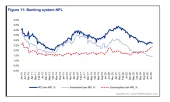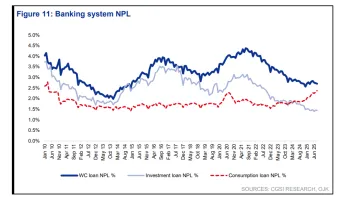Asia to lead the 21st century through financial inclusion and data-driven banking
By Rana KapoorWith over $3.8b invested in Asia’s fintech ecosystem in 2017 and the emergence of a bouquet of services such as insurtech, Internet of Things (IoT) in wealth management, consumer-centric targeted services, amongst others, the region is well-poised to emerge as the leader of next generation fintech applications. Asia is also home to one of the largest peer-to-peer (P2P) lending, crowd funding, and e-commerce markets which complement its growing fintech base.
Extensive consumer awareness combined with the banking and financial industry’s massive technology adoption has led Asian giants like India and China to invest, adopt, and scale fintech innovations, much before their global counterparts. As Asia continues to show strong signs of economic growth, driven by robust technology adoption, rapid urbanisation as well as an emerging middle class, the region is at the vanguard of a financial transformation which will redefine how financial services are delivered and consumed.
A region of growth
Firstly, Asia is home to two of the world’s biggest financial centers out of the global ‘Big 4’—Hong Kong, Singapore, London, and New York—and is one the leading regions in fintech adoption rates. The ‘Fintech Adoption Index 2017’ by EY shows that 69% of individuals in China and 52% in India have used basic fintech applications, whereas only 33% of US citizens have utilised technology in banking. Moreover, the world’s leading banks have recognised the strategic importance of the Asian region as an emerging financial hub from both a fintech and traditional banking opportunity.
Secondly, the Asian region accounts for over 4.5 billion people and around 1 billion do not have access to formal banking services. A majority of them reside within India, providing Fintech startups and financial service companies alike with an opportunity to focus on last-mile financial inclusivity. Recent government policies particularly in India have given a huge boost to greater digital adoption and the online payment ecosystem, rapidly overcoming attitude inertia. Rising smartphone and mobile internet penetration levels within countries like India and China will also facilitate ease of digital connectivity and doing business from a fintech perspective.
Thirdly, Asia is one of the largest hubs with regards to High Net Worth Individual (HNI) population, global remittances, and wealth creation. The APAC region has over 5 million HNIs amassing wealth over $18t with a major part of them residing in India, China, and Japan. Further, India and China recorded one of the highest global remittance inflows in 2017 at values of $69b and $64b respectively. As Asia emerges as a region for the rich, it is of strategic importance for global and domestic financial organisations to ride this wave of high-paced growth through low cost, customer-centric innovation. Coupled with a large pool of young engineers trained in technology, the opportunity is ripe to integrate big data, AI, machine learning into meaningful financial solutions and products.
Lastly, the advent of fintech innovations has led to enhanced regulation, stringent capital adequacy, and risk management standards in order to fight digital fraud and default risk, especially in Asia. At the heart of finance and banking, especially those solutions powered by technology lies digital trust and responsive & stable regulatory and policy interventions. We have benefitted tremendously as a nation from the recent visionary changes, devising a clear system to fight fraud risk, especially as the banks are beginning to cater to the unbanked.
In conclusion
By 2030, the contours of the banking and finance industry will witness a rapid transformation by leveraging knowledge-led, innovative reforms, entrepreneurial models based on rapid technology adoption and organisational change through specialised collaborations. There will be new and innovative collaborations to service even the bottom of the pyramid, to reach out to the last man standing through traditional as well as new age collaborations, engaging with NBFCs, fintech companies, and startups. The industry will face and surmount multiple challenges in delivering seamless payments, both for retail and the MSME segments. There is a fair possibility that the norm of ‘business as usual’, will be augmented through specialised technology and may even be run in gig partnerships with other fintech companies.
It will be the Asian markets, which will lead the financial world and in turn chart out the global growth story. It is not surprising that the 21st century is also widely known as the Century of Asia. As PwC in its report predicts that by 2050, China and India will become the world’s leading economies based on purchasing power parity (PPP), it automatically also implies that these countries will become the most sought after investment destinations. Offering investors the best value addition along with access to a growing market in a competitive and digital ecosystem, empowered and governed by world class technology in the banking and financial sector.




















 Advertise
Advertise






